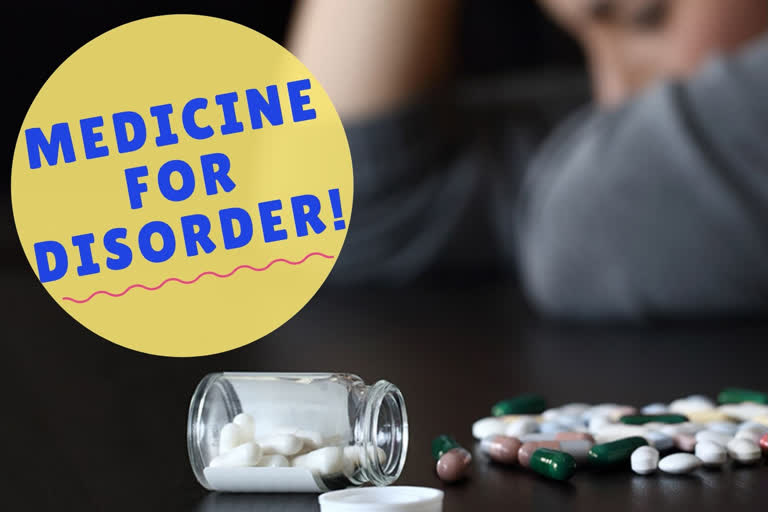Hyderabad: Numerous people across the country, who are facing sickness and illness ranging from small illnesses to chronic ones, get to hear something soothing now.
It is to be heard that the drug and pharmaceutical market is expected to see a decline of around 80% in the medicinal rates, thanks to the central government's initiative to curb the rise in drug prices.
As per statistics, there are about 10,000 non-scheduled categories of medicines that do not come under the regulated pricing of the Central Drug Controller General of India.
The list of these 10,000 drug categories ranges from vitamin pills to antibiotics.
The positive response of pharmaceutical manufacturers and suppliers to the central government's proposal that their profits should not exceed 30 per cent on the medicines was warmly welcomed.
Vendors profit to the tune of about 30% on expensive drugs used for cancer patients.
Post the restrictions of the NPPA (National Pharmaceutical Pricing Authority) on expensive medicines there are naturally increasing demands on the other drug varieties.
The latest development of capping the profit on the regular and general medicinal categories is a result of the exercise of the Department of Health & Family Welfare, GOI and NPPA for months together.
The pharmaceutical department issued a notification earlier this year that new patented products on rare diseases, need not be provided under regulatory pricing, for the first 5 years of them being introduced into the Indian market.
There were objections that pushing patent drugs to the limits of regulation was a serious offence.
Consumerism can be beneficial if the central government contributes to the reduction in the prices of all the drugs without the need for such exceptions.
A number of adulterated drugs are available these days, in place of original drugs for even the most emergency and life-saving medicinal categories.
Due to the duplication of counterfeit drugs in the treatment of malaria and pneumonia, the fact that two and a half million babies are meeting their ends in the world annually is shocking.
Around 29 duplicated medicines have been found out in across 75 countries, during the year 2008.
Over the course of ten years, the list of duplicates has increased to 95 and the number of affected countries to 113 - eyes widening as the deadlock continues.
Statistics show that the production of these counterfeit drugs is high in India and China.
European countries face up to 15 years in prison if found guilty of counterfeit drugs.
Drug addicts continue to be the most favourable environment for pharmaceutical addicts in the area, which is causing public health problems.
Around 11% of medicines dispensed in government hospitals alone are failing quality testing.
ASSOCHAM (The Associated Chambers of Commerce of India), around 4 years ago itself, stated that around Rs.30 thousand crores of illegal trade are being carried with regards to the counterfeited medicinal industry in India.
In fact, the Mashelkar Committee has in the past elaborated on the systematic action that is necessary to uphold the country's dignity in the field of medicine.
The lack of immediate action by itself is causing the illegal and anti-social elements to grow without control of their evil doings.
Block-chain technology is coming of some help in the use of evading and controlling the counterfeit drugs, over the past few years.
There shouldn’t be any more delays in implementing more such measures to bring this entire exercise of duplicity under complete control.
It is imperative that national policy and action plan is put in place with immediate effect so that the Indian pharmaceutical industry is cleaned up and the consumers are in safe hands, especially with regards to the medicines they depend upon for cure.
If only the generic medicines were popular enough in the country, poor patients would have benefited by now.
Generic medicinal stores are well known for cheap pharmaceutical services. More than five thousand generic pharmacies are offering medicines at affordable prices, according to central sources.
The tragedy is that there is a huge gap between official announcements and on-field conditions.
More than three-quarters of doctors in the US are prescribing generic drugs, and more in Britain, as per study reports. The most interesting factor is that India is the leading supplier of generic drugs internationally.
About 30% of India's drug exports go to the US, 19% to Africa and 16% go to European countries.
Russia, Nigeria, Brazil and Germany are also being supplied to these exports.
Various factors have been attributed to the failure in the awareness of generic drug utilization, domestically.
Most of the time, people are deliberately being misguided on the usage and quality of drug production.
This is only helping the selfish stakeholders in the open market such as businessmen, doctors, hospitals and others.
NPPA has in the past, has brought out in one of their reports about four major clinics in the nation's capital, New Delhi, that have been earning profits by charging the patients, about 160-1200% profit on non- costly medicines and about 115-360% on non-regulated medicines.
The looting process that is spreading across the country over generations, has been causing many families to end up in a financial lurch by the time they get treated.
In a country where drugs cost up to 70 per cent of the patient's treatment cost – it is the need of the hour, that the government has to implement measures to increase the widespread use of generic products, including officially regulating the ever-increasing prices of medicines sold by private companies and closing the counterfeits.
To that extent, it is the joint participation of the central and state governments in the overall functioning of this entire exercise - that can preserve a basic right of the poor – Right to Health and Treatment.
Once, the diseased system gets treated, it shall not be far enough for us to hope a healthy nation.



